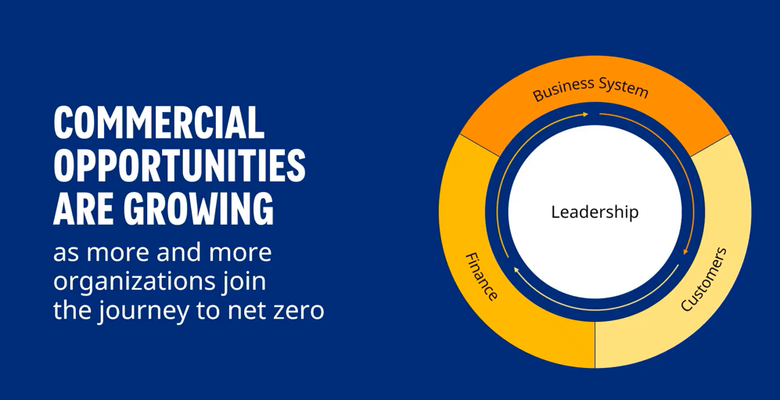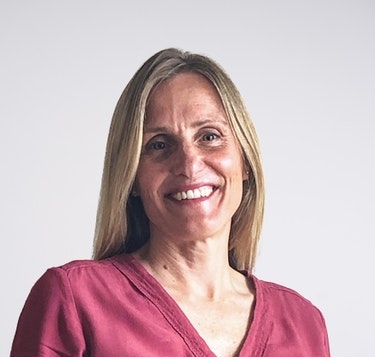About Lorem Ipsum Lorem Ipsum Dolor Sit Amet
Sed ut perspiciatis unde omnis iste natus error sit voluptatem accusantium doloremque laudantium, totam rem aperiam, eaque ipsa quae ab illo inventore veritatis et quasi architecto beatae vitae dicta sunt explicabo.

Nemo enim ipsam voluptatem quia voluptas sit aspernatur aut odit aut fugit, sed quia consequuntur magni dolores eos qui ratione voluptatem sequi nesciunt. Neque porro quisquam est, qui dolorem ipsum quia dolor sit amet.Text In publishing and graphic design, lorem ipsum is a placeholder text (filler text) commonly used to demonstrate the graphic elements of a document or visual presentation, such as font, typography, and layout, by removing the distraction of meaningful content. The lorem ipsum text is typically a mangled section of De finibus bonorum et malorum, a 1st-century BC Latin text by Cicero, with words altered, added, and removed that make it nonsensical and not proper Latin
- About This Video
- Transcript
The Silk Road is a dynamic region with transformation and investment opportunities. We reveal how to navigate challenges and seize potential in the market.
Learn more about the event, here.
Ben Simpfendorfer
The Silk Road has changed fundamentally over the last five years. The story used to be about a simple exchange of goods. Today, it's so much more important than that. The region accounts for half of global growth. It's going faster than most advanced economies, and at the same time, the flow of goods is no longer just consumer goods for oil.
It's about the flow of talent, of technology and of capital. And so for any CEO or board member, when they're thinking about the next stage in their company's growth, they need to be thinking about the Silk Road as a part of that vision.This article is posted with permission of Harvard Business Publishing. Any further copying, distribution, or use is prohibited without written consent from HBP - permissions@harvardbusiness.org.
The problem of bias is an endemic one, affecting financial services start-ups and incumbents alike. A landmark 2018 study conducted at UC Berkeley found that even though fintech algorithms charge minority borrowers 40% less on average than face-to-face lenders, they still assign extra mortgage interest to borrowers who are members of protected classes.
- About This Video
- Transcript
The Silk Road is a dynamic region with transformation and investment opportunities. We reveal how to navigate challenges and seize potential in the market.
Learn more about the event, here.
Ben Simpfendorfer
The Silk Road has changed fundamentally over the last five years. The story used to be about a simple exchange of goods. Today, it's so much more important than that. The region accounts for half of global growth. It's going faster than most advanced economies, and at the same time, the flow of goods is no longer just consumer goods for oil.
It's about the flow of talent, of technology and of capital. And so for any CEO or board member, when they're thinking about the next stage in their company's growth, they need to be thinking about the Silk Road as a part of that vision.This article is posted with permission of Harvard Business Publishing. Any further copying, distribution, or use is prohibited without written consent from HBP - permissions@harvardbusiness.org.
The problem of bias is an endemic one, affecting financial services start-ups and incumbents alike. A landmark 2018 study conducted at UC Berkeley found that even though fintech algorithms charge minority borrowers 40% less on average than face-to-face lenders, they still assign extra mortgage interest to borrowers who are members of protected classes.
The Silk Road is a dynamic region with transformation and investment opportunities. We reveal how to navigate challenges and seize potential in the market.
Learn more about the event, here.
Ben Simpfendorfer
The Silk Road has changed fundamentally over the last five years. The story used to be about a simple exchange of goods. Today, it's so much more important than that. The region accounts for half of global growth. It's going faster than most advanced economies, and at the same time, the flow of goods is no longer just consumer goods for oil.
It's about the flow of talent, of technology and of capital. And so for any CEO or board member, when they're thinking about the next stage in their company's growth, they need to be thinking about the Silk Road as a part of that vision.This article is posted with permission of Harvard Business Publishing. Any further copying, distribution, or use is prohibited without written consent from HBP - permissions@harvardbusiness.org.
The problem of bias is an endemic one, affecting financial services start-ups and incumbents alike. A landmark 2018 study conducted at UC Berkeley found that even though fintech algorithms charge minority borrowers 40% less on average than face-to-face lenders, they still assign extra mortgage interest to borrowers who are members of protected classes.
Lorem Ipsum Text In publishing and graphic design,
The problem of bias is an endemic one, affecting financial services start-ups and incumbents alike. A landmark 2018 study conducted at UC Berkeley found that even though fintech algorithms charge minority borrowers 40% less on
average than face-to-face lenders, they still assign extra mortgage interest to borrowers who are members of protected classes.
![]()
This article is posted with permission of Harvard Business Publishing. Any further copying, distribution, or use is prohibited without written consent from HBP - permissions@harvardbusiness.org.
![]()
We have a holistic coverage that enables us to support our clients by combining our expertise with our proximity with shareholders, management, and understanding of end customers (via our private equity and financial services franchises).
Our new paper, Model Management In The COVID-19 Era, provides the critical actions to take now and helps financial institutions develop a more resilient model management program to guide 2020 (and beyond) activities
About Lorem Ipsum Text In publishing and graphic design, lorem ipsum is a placeholder text (filler text) commonly used to demonstrate the graphic elements of a document or visual presentation, such as font, typography, and layout, by removing the distraction of meaningful content.
 It's about the flow of talent, of technology and of capital. And so for any CEO or board member, when they're thinking about the next stage in their company's growth, they need to be thinking about the Silk Road as a part of that visionBen Simpfendorfer, Partner, Oliver Wyman
It's about the flow of talent, of technology and of capital. And so for any CEO or board member, when they're thinking about the next stage in their company's growth, they need to be thinking about the Silk Road as a part of that visionBen Simpfendorfer, Partner, Oliver Wyman
About Lorem Ipsum Text In publishing and graphic design, lorem ipsum is a placeholder text (filler text) commonly used to demonstrate the graphic elements of a document or visual presentation, such as font, typography, and layout, by removing the distraction of meaningful content.
Introducing the second edition of the Ahead of the Curve series by Oliver Wyman, a collection of articles and videos in which our partners discuss innovative trends with industry disruptors. This edition will highlight emerging opportunities across the data markets.
The lorem ipsum text is typically a mangled section of De finibus bonorum et malorum, a 1st-century BC Latin text by Cicero, with words altered, added, and removed that make itggg Medicare Advantage market is growing rapidly with a wide variety of products and benefit choices available to members, who are becoming more discerning in benefit evaluations and product selection. In this context, it is imperative to understand the perceived value and relative importance of each benefit as plans develop the 2023 bid nonsensical and not proper Latin
- About this video
- Transcript
- qa chart
- Chartv3
Uncover the future innovation areas in banking. From climate to generative AI, Howard Silby discusses how banks will lead or enable the rise of these areas.
INFocus Series
INFocus provides exclusive insights and trends from experts and leaders across the Asia Pacific region, exploring the forces, opportunities, and challenges shaping its future.
Howard
Generative AI has as a massive role to play on a number of immediate issues that our customers and society is facing.
Chris
We're in an age of increasing uncertainty, a lot of disruption in the markets. There is an ongoing battle to figure out how to manage risk and economic disruption. What do you see as the biggest areas of innovation that you think can help within that scenario, in that market context?
Howard
We need to distinguish between some of those more disruptive, perhaps longer-term elements and things that are causing some of those risk issues and economic disruption for our customers right here, right now. In terms of where my team is largely focused on what we call the leaps ahead that we need to face into.
So, climate. What's the bank's role in the ongoing climate challenge, both physical risk and decarbonization? AI, particularly Generative AI. I know it's really hot topic right now, but it's got a long way to run. We see that as something over the long term, we need to build a lot of muscle right now, but continue to face over coming years. Another one for the financial service industry that's going to be a continuing long running theme is payments. That's a massive area of focus for us. It's the main way that customers interact with financial services.
Chris
That's super interesting. Thanks Howard. Just thinking about, there's longer term, there’s big leaps, and the role that you and NAB can play within those. Where do you see the bank operating? Are you a leader, are you a partner or a sponsor or a fast follower in the development of those technologies? Where do you think you sit within the innovation practice?
Howard
It actually varies, Chris, depending on which topic we're speaking to. If I take climate as an example, I do think the bank will end up leading in that space. A large number of banks globally have made net zero commitments and locally in different geographies. If I take Australia and New Zealand, for example we're certainly being asked and expected by the government to take a lead, particularly with respect to decarbonization.
Generative AI has a massive role to play on a number of immediate issues that our customers and society is facing. I talked about scams and frauds as well earlier, and that's a good example. But we do need to be mindful of the fact that banks are highly regulated entities and when it comes to recommendations coming out of generative AI tools, there's a huge amount of work we can do internally. But surfacing those to customers is not something that the banks are going to be doing in advance of other industry sectors. There's a very simple reason for that — we cannot afford to be wrong one in 10,000 times. We're a highly regulated entity and near enough is not good enough. There's a huge set of user cases that will be applied using generative AI as an example. We're not going to be at the forefront of customer interactions that are entirely generative AI-led.
That is the topic where we have an enormous range of exciting partnerships as well. For us it's about partnering, it's about working with others who are bringing great customer solutions to market and then working out which of those do we put into our core propositions.
Chris
Really interesting to hear your thoughts on where the bank will be leading, and then enabling, sponsoring, and partnering to move forward. Taking this back a little bit more personally, I'd be really interested to hear from yourself. What are you personally most excited about?
Howard
Well, it's hard to pick your favorite children as an innovation leader. From my perspective, my postgraduate degree was in machine learning in the AI winter
I ended up doing a lot of study in genetic algorithms and other techniques. I'm really excited with the advances in the last two — three years. We are now seeing some real customer impact as a result of these tools and that one for me is like a personal area of interest that I can dive quite deeply into.
Chris
Taking a step back and looking at the broad innovation, there are many different elements. There's a lot of innovation happening in different parts, some of which banks are leading, some of which banks are sponsoring, and some of which fintechs are pushing and you are helping to enable. Where do you see this continued evolution going?
Howard
That's a big philosophical question, Chris. My only answer to that can draw on the timelines of history across all sectors. There's always a concern that there'll be one super app to do everything in our lives or one dominant corporation. Where are we? We’re in 2023.
If I go back to 2010, I think I'm right in saying that Cisco, Oracle and IBM were still in the top five tech companies and they're not now. Even on the super app type area, Southeast Asia and China are where we've seen the rise and dominance of the super apps.
I have that belief that it will continue to play out in all sectors. I do think banks have a really important role to try and make sure our front door is as wide as possible.
I see a world of super healthy, competitive tension for many years to come yet.
Chris
Okay, excellent. I'm sure we'd all look forward to that.
Howard
Thanks Chris.
Chris
Thanks Howard.
- About this video
- Transcript
- qa chart
- Chartv3
Uncover the future innovation areas in banking. From climate to generative AI, Howard Silby discusses how banks will lead or enable the rise of these areas.
INFocus Series
INFocus provides exclusive insights and trends from experts and leaders across the Asia Pacific region, exploring the forces, opportunities, and challenges shaping its future.
Howard
Generative AI has as a massive role to play on a number of immediate issues that our customers and society is facing.
Chris
We're in an age of increasing uncertainty, a lot of disruption in the markets. There is an ongoing battle to figure out how to manage risk and economic disruption. What do you see as the biggest areas of innovation that you think can help within that scenario, in that market context?
Howard
We need to distinguish between some of those more disruptive, perhaps longer-term elements and things that are causing some of those risk issues and economic disruption for our customers right here, right now. In terms of where my team is largely focused on what we call the leaps ahead that we need to face into.
So, climate. What's the bank's role in the ongoing climate challenge, both physical risk and decarbonization? AI, particularly Generative AI. I know it's really hot topic right now, but it's got a long way to run. We see that as something over the long term, we need to build a lot of muscle right now, but continue to face over coming years. Another one for the financial service industry that's going to be a continuing long running theme is payments. That's a massive area of focus for us. It's the main way that customers interact with financial services.
Chris
That's super interesting. Thanks Howard. Just thinking about, there's longer term, there’s big leaps, and the role that you and NAB can play within those. Where do you see the bank operating? Are you a leader, are you a partner or a sponsor or a fast follower in the development of those technologies? Where do you think you sit within the innovation practice?
Howard
It actually varies, Chris, depending on which topic we're speaking to. If I take climate as an example, I do think the bank will end up leading in that space. A large number of banks globally have made net zero commitments and locally in different geographies. If I take Australia and New Zealand, for example we're certainly being asked and expected by the government to take a lead, particularly with respect to decarbonization.
Generative AI has a massive role to play on a number of immediate issues that our customers and society is facing. I talked about scams and frauds as well earlier, and that's a good example. But we do need to be mindful of the fact that banks are highly regulated entities and when it comes to recommendations coming out of generative AI tools, there's a huge amount of work we can do internally. But surfacing those to customers is not something that the banks are going to be doing in advance of other industry sectors. There's a very simple reason for that — we cannot afford to be wrong one in 10,000 times. We're a highly regulated entity and near enough is not good enough. There's a huge set of user cases that will be applied using generative AI as an example. We're not going to be at the forefront of customer interactions that are entirely generative AI-led.
That is the topic where we have an enormous range of exciting partnerships as well. For us it's about partnering, it's about working with others who are bringing great customer solutions to market and then working out which of those do we put into our core propositions.
Chris
Really interesting to hear your thoughts on where the bank will be leading, and then enabling, sponsoring, and partnering to move forward. Taking this back a little bit more personally, I'd be really interested to hear from yourself. What are you personally most excited about?
Howard
Well, it's hard to pick your favorite children as an innovation leader. From my perspective, my postgraduate degree was in machine learning in the AI winter
I ended up doing a lot of study in genetic algorithms and other techniques. I'm really excited with the advances in the last two — three years. We are now seeing some real customer impact as a result of these tools and that one for me is like a personal area of interest that I can dive quite deeply into.
Chris
Taking a step back and looking at the broad innovation, there are many different elements. There's a lot of innovation happening in different parts, some of which banks are leading, some of which banks are sponsoring, and some of which fintechs are pushing and you are helping to enable. Where do you see this continued evolution going?
Howard
That's a big philosophical question, Chris. My only answer to that can draw on the timelines of history across all sectors. There's always a concern that there'll be one super app to do everything in our lives or one dominant corporation. Where are we? We’re in 2023.
If I go back to 2010, I think I'm right in saying that Cisco, Oracle and IBM were still in the top five tech companies and they're not now. Even on the super app type area, Southeast Asia and China are where we've seen the rise and dominance of the super apps.
I have that belief that it will continue to play out in all sectors. I do think banks have a really important role to try and make sure our front door is as wide as possible.
I see a world of super healthy, competitive tension for many years to come yet.
Chris
Okay, excellent. I'm sure we'd all look forward to that.
Howard
Thanks Chris.
Chris
Thanks Howard.
Uncover the future innovation areas in banking. From climate to generative AI, Howard Silby discusses how banks will lead or enable the rise of these areas.
INFocus Series
INFocus provides exclusive insights and trends from experts and leaders across the Asia Pacific region, exploring the forces, opportunities, and challenges shaping its future.
Howard
Generative AI has as a massive role to play on a number of immediate issues that our customers and society is facing.
Chris
We're in an age of increasing uncertainty, a lot of disruption in the markets. There is an ongoing battle to figure out how to manage risk and economic disruption. What do you see as the biggest areas of innovation that you think can help within that scenario, in that market context?
Howard
We need to distinguish between some of those more disruptive, perhaps longer-term elements and things that are causing some of those risk issues and economic disruption for our customers right here, right now. In terms of where my team is largely focused on what we call the leaps ahead that we need to face into.
So, climate. What's the bank's role in the ongoing climate challenge, both physical risk and decarbonization? AI, particularly Generative AI. I know it's really hot topic right now, but it's got a long way to run. We see that as something over the long term, we need to build a lot of muscle right now, but continue to face over coming years. Another one for the financial service industry that's going to be a continuing long running theme is payments. That's a massive area of focus for us. It's the main way that customers interact with financial services.
Chris
That's super interesting. Thanks Howard. Just thinking about, there's longer term, there’s big leaps, and the role that you and NAB can play within those. Where do you see the bank operating? Are you a leader, are you a partner or a sponsor or a fast follower in the development of those technologies? Where do you think you sit within the innovation practice?
Howard
It actually varies, Chris, depending on which topic we're speaking to. If I take climate as an example, I do think the bank will end up leading in that space. A large number of banks globally have made net zero commitments and locally in different geographies. If I take Australia and New Zealand, for example we're certainly being asked and expected by the government to take a lead, particularly with respect to decarbonization.
Generative AI has a massive role to play on a number of immediate issues that our customers and society is facing. I talked about scams and frauds as well earlier, and that's a good example. But we do need to be mindful of the fact that banks are highly regulated entities and when it comes to recommendations coming out of generative AI tools, there's a huge amount of work we can do internally. But surfacing those to customers is not something that the banks are going to be doing in advance of other industry sectors. There's a very simple reason for that — we cannot afford to be wrong one in 10,000 times. We're a highly regulated entity and near enough is not good enough. There's a huge set of user cases that will be applied using generative AI as an example. We're not going to be at the forefront of customer interactions that are entirely generative AI-led.
That is the topic where we have an enormous range of exciting partnerships as well. For us it's about partnering, it's about working with others who are bringing great customer solutions to market and then working out which of those do we put into our core propositions.
Chris
Really interesting to hear your thoughts on where the bank will be leading, and then enabling, sponsoring, and partnering to move forward. Taking this back a little bit more personally, I'd be really interested to hear from yourself. What are you personally most excited about?
Howard
Well, it's hard to pick your favorite children as an innovation leader. From my perspective, my postgraduate degree was in machine learning in the AI winter
I ended up doing a lot of study in genetic algorithms and other techniques. I'm really excited with the advances in the last two — three years. We are now seeing some real customer impact as a result of these tools and that one for me is like a personal area of interest that I can dive quite deeply into.
Chris
Taking a step back and looking at the broad innovation, there are many different elements. There's a lot of innovation happening in different parts, some of which banks are leading, some of which banks are sponsoring, and some of which fintechs are pushing and you are helping to enable. Where do you see this continued evolution going?
Howard
That's a big philosophical question, Chris. My only answer to that can draw on the timelines of history across all sectors. There's always a concern that there'll be one super app to do everything in our lives or one dominant corporation. Where are we? We’re in 2023.
If I go back to 2010, I think I'm right in saying that Cisco, Oracle and IBM were still in the top five tech companies and they're not now. Even on the super app type area, Southeast Asia and China are where we've seen the rise and dominance of the super apps.
I have that belief that it will continue to play out in all sectors. I do think banks have a really important role to try and make sure our front door is as wide as possible.
I see a world of super healthy, competitive tension for many years to come yet.
Chris
Okay, excellent. I'm sure we'd all look forward to that.
Howard
Thanks Chris.
Chris
Thanks Howard.
Uncover the future innovation areas in banking. From climate to generative AI, Howard Silby discusses how banks will lead or enable the rise of these areas.
INFocus Series
INFocus provides exclusive insights and trends from experts and leaders across the Asia Pacific region, exploring the forces, opportunities, and challenges shaping its future.
Howard
Generative AI has as a massive role to play on a number of immediate issues that our customers and society is facing.
Chris
We're in an age of increasing uncertainty, a lot of disruption in the markets. There is an ongoing battle to figure out how to manage risk and economic disruption. What do you see as the biggest areas of innovation that you think can help within that scenario, in that market context?
Howard
We need to distinguish between some of those more disruptive, perhaps longer-term elements and things that are causing some of those risk issues and economic disruption for our customers right here, right now. In terms of where my team is largely focused on what we call the leaps ahead that we need to face into.
So, climate. What's the bank's role in the ongoing climate challenge, both physical risk and decarbonization? AI, particularly Generative AI. I know it's really hot topic right now, but it's got a long way to run. We see that as something over the long term, we need to build a lot of muscle right now, but continue to face over coming years. Another one for the financial service industry that's going to be a continuing long running theme is payments. That's a massive area of focus for us. It's the main way that customers interact with financial services.
Chris
That's super interesting. Thanks Howard. Just thinking about, there's longer term, there’s big leaps, and the role that you and NAB can play within those. Where do you see the bank operating? Are you a leader, are you a partner or a sponsor or a fast follower in the development of those technologies? Where do you think you sit within the innovation practice?
Howard
It actually varies, Chris, depending on which topic we're speaking to. If I take climate as an example, I do think the bank will end up leading in that space. A large number of banks globally have made net zero commitments and locally in different geographies. If I take Australia and New Zealand, for example we're certainly being asked and expected by the government to take a lead, particularly with respect to decarbonization.
Generative AI has a massive role to play on a number of immediate issues that our customers and society is facing. I talked about scams and frauds as well earlier, and that's a good example. But we do need to be mindful of the fact that banks are highly regulated entities and when it comes to recommendations coming out of generative AI tools, there's a huge amount of work we can do internally. But surfacing those to customers is not something that the banks are going to be doing in advance of other industry sectors. There's a very simple reason for that — we cannot afford to be wrong one in 10,000 times. We're a highly regulated entity and near enough is not good enough. There's a huge set of user cases that will be applied using generative AI as an example. We're not going to be at the forefront of customer interactions that are entirely generative AI-led.
That is the topic where we have an enormous range of exciting partnerships as well. For us it's about partnering, it's about working with others who are bringing great customer solutions to market and then working out which of those do we put into our core propositions.
Chris
Really interesting to hear your thoughts on where the bank will be leading, and then enabling, sponsoring, and partnering to move forward. Taking this back a little bit more personally, I'd be really interested to hear from yourself. What are you personally most excited about?
Howard
Well, it's hard to pick your favorite children as an innovation leader. From my perspective, my postgraduate degree was in machine learning in the AI winter
I ended up doing a lot of study in genetic algorithms and other techniques. I'm really excited with the advances in the last two — three years. We are now seeing some real customer impact as a result of these tools and that one for me is like a personal area of interest that I can dive quite deeply into.
Chris
Taking a step back and looking at the broad innovation, there are many different elements. There's a lot of innovation happening in different parts, some of which banks are leading, some of which banks are sponsoring, and some of which fintechs are pushing and you are helping to enable. Where do you see this continued evolution going?
Howard
That's a big philosophical question, Chris. My only answer to that can draw on the timelines of history across all sectors. There's always a concern that there'll be one super app to do everything in our lives or one dominant corporation. Where are we? We’re in 2023.
If I go back to 2010, I think I'm right in saying that Cisco, Oracle and IBM were still in the top five tech companies and they're not now. Even on the super app type area, Southeast Asia and China are where we've seen the rise and dominance of the super apps.
I have that belief that it will continue to play out in all sectors. I do think banks have a really important role to try and make sure our front door is as wide as possible.
I see a world of super healthy, competitive tension for many years to come yet.
Chris
Okay, excellent. I'm sure we'd all look forward to that.
Howard
Thanks Chris.
Chris
Thanks Howard.
Uncover the future innovation areas in banking. From climate to generative AI, Howard Silby discusses how banks will lead or enable the rise of these areas.
INFocus Series
INFocus provides exclusive insights and trends from experts and leaders across the Asia Pacific region, exploring the forces, opportunities, and challenges shaping its future.
Howard
Generative AI has as a massive role to play on a number of immediate issues that our customers and society is facing.
Chris
We're in an age of increasing uncertainty, a lot of disruption in the markets. There is an ongoing battle to figure out how to manage risk and economic disruption. What do you see as the biggest areas of innovation that you think can help within that scenario, in that market context?
Howard
We need to distinguish between some of those more disruptive, perhaps longer-term elements and things that are causing some of those risk issues and economic disruption for our customers right here, right now. In terms of where my team is largely focused on what we call the leaps ahead that we need to face into.
So, climate. What's the bank's role in the ongoing climate challenge, both physical risk and decarbonization? AI, particularly Generative AI. I know it's really hot topic right now, but it's got a long way to run. We see that as something over the long term, we need to build a lot of muscle right now, but continue to face over coming years. Another one for the financial service industry that's going to be a continuing long running theme is payments. That's a massive area of focus for us. It's the main way that customers interact with financial services.
Chris
That's super interesting. Thanks Howard. Just thinking about, there's longer term, there’s big leaps, and the role that you and NAB can play within those. Where do you see the bank operating? Are you a leader, are you a partner or a sponsor or a fast follower in the development of those technologies? Where do you think you sit within the innovation practice?
Howard
It actually varies, Chris, depending on which topic we're speaking to. If I take climate as an example, I do think the bank will end up leading in that space. A large number of banks globally have made net zero commitments and locally in different geographies. If I take Australia and New Zealand, for example we're certainly being asked and expected by the government to take a lead, particularly with respect to decarbonization.
Generative AI has a massive role to play on a number of immediate issues that our customers and society is facing. I talked about scams and frauds as well earlier, and that's a good example. But we do need to be mindful of the fact that banks are highly regulated entities and when it comes to recommendations coming out of generative AI tools, there's a huge amount of work we can do internally. But surfacing those to customers is not something that the banks are going to be doing in advance of other industry sectors. There's a very simple reason for that — we cannot afford to be wrong one in 10,000 times. We're a highly regulated entity and near enough is not good enough. There's a huge set of user cases that will be applied using generative AI as an example. We're not going to be at the forefront of customer interactions that are entirely generative AI-led.
That is the topic where we have an enormous range of exciting partnerships as well. For us it's about partnering, it's about working with others who are bringing great customer solutions to market and then working out which of those do we put into our core propositions.
Chris
Really interesting to hear your thoughts on where the bank will be leading, and then enabling, sponsoring, and partnering to move forward. Taking this back a little bit more personally, I'd be really interested to hear from yourself. What are you personally most excited about?
Howard
Well, it's hard to pick your favorite children as an innovation leader. From my perspective, my postgraduate degree was in machine learning in the AI winter
I ended up doing a lot of study in genetic algorithms and other techniques. I'm really excited with the advances in the last two — three years. We are now seeing some real customer impact as a result of these tools and that one for me is like a personal area of interest that I can dive quite deeply into.
Chris
Taking a step back and looking at the broad innovation, there are many different elements. There's a lot of innovation happening in different parts, some of which banks are leading, some of which banks are sponsoring, and some of which fintechs are pushing and you are helping to enable. Where do you see this continued evolution going?
Howard
That's a big philosophical question, Chris. My only answer to that can draw on the timelines of history across all sectors. There's always a concern that there'll be one super app to do everything in our lives or one dominant corporation. Where are we? We’re in 2023.
If I go back to 2010, I think I'm right in saying that Cisco, Oracle and IBM were still in the top five tech companies and they're not now. Even on the super app type area, Southeast Asia and China are where we've seen the rise and dominance of the super apps.
I have that belief that it will continue to play out in all sectors. I do think banks have a really important role to try and make sure our front door is as wide as possible.
I see a world of super healthy, competitive tension for many years to come yet.
Chris
Okay, excellent. I'm sure we'd all look forward to that.
Howard
Thanks Chris.
Chris
Thanks Howard.
- Text
- Text
- blockquote
- image
- video
- accordion-v3
- chart v3
Some text to test benefit choices available to members, who are becoming more discerning in benefit evaluations and product selection. In this context, it is imperative to understand the perceived value and relative importance of each benefit as plans develop the 2023 bid nonsensical and not proper Latin
 benefit choices available to members, who are becoming more discerning in benefit evaluations and product selection. In this context, it is imperative to understand the perceived value and relative importance of each benefit as plans develop the 2023 bid nonsensical and not proper Latin
benefit choices available to members, who are becoming more discerning in benefit evaluations and product selection. In this context, it is imperative to understand the perceived value and relative importance of each benefit as plans develop the 2023 bid nonsensical and not proper Latin
qa
 Accordion blockquote
Accordion blockquote

Accordion Text choices available to members,
who are becoming more discerning in benefit evaluations and product selection. In this context, it is imperative to understand the perceived value and relative importance of each benefit as plans develop the 2023 bid nonsensical and not proper Latin

- Text
- Text
- blockquote
- image
- video
- accordion-v3
- chart v3
Some text to test benefit choices available to members, who are becoming more discerning in benefit evaluations and product selection. In this context, it is imperative to understand the perceived value and relative importance of each benefit as plans develop the 2023 bid nonsensical and not proper Latin
 benefit choices available to members, who are becoming more discerning in benefit evaluations and product selection. In this context, it is imperative to understand the perceived value and relative importance of each benefit as plans develop the 2023 bid nonsensical and not proper Latin
benefit choices available to members, who are becoming more discerning in benefit evaluations and product selection. In this context, it is imperative to understand the perceived value and relative importance of each benefit as plans develop the 2023 bid nonsensical and not proper Latin
qa
 Accordion blockquote
Accordion blockquote

Accordion Text choices available to members,
who are becoming more discerning in benefit evaluations and product selection. In this context, it is imperative to understand the perceived value and relative importance of each benefit as plans develop the 2023 bid nonsensical and not proper Latin

Some text to test benefit choices available to members, who are becoming more discerning in benefit evaluations and product selection. In this context, it is imperative to understand the perceived value and relative importance of each benefit as plans develop the 2023 bid nonsensical and not proper Latin
 benefit choices available to members, who are becoming more discerning in benefit evaluations and product selection. In this context, it is imperative to understand the perceived value and relative importance of each benefit as plans develop the 2023 bid nonsensical and not proper Latin
benefit choices available to members, who are becoming more discerning in benefit evaluations and product selection. In this context, it is imperative to understand the perceived value and relative importance of each benefit as plans develop the 2023 bid nonsensical and not proper Latin
qa
 Accordion blockquote
Accordion blockquote

Accordion Text choices available to members,
who are becoming more discerning in benefit evaluations and product selection. In this context, it is imperative to understand the perceived value and relative importance of each benefit as plans develop the 2023 bid nonsensical and not proper Latin

Some text to test benefit choices available to members, who are becoming more discerning in benefit evaluations and product selection. In this context, it is imperative to understand the perceived value and relative importance of each benefit as plans develop the 2023 bid nonsensical and not proper Latin
 benefit choices available to members, who are becoming more discerning in benefit evaluations and product selection. In this context, it is imperative to understand the perceived value and relative importance of each benefit as plans develop the 2023 bid nonsensical and not proper Latin
benefit choices available to members, who are becoming more discerning in benefit evaluations and product selection. In this context, it is imperative to understand the perceived value and relative importance of each benefit as plans develop the 2023 bid nonsensical and not proper Latin
qa
 Accordion blockquote
Accordion blockquote

Accordion Text choices available to members,
who are becoming more discerning in benefit evaluations and product selection. In this context, it is imperative to understand the perceived value and relative importance of each benefit as plans develop the 2023 bid nonsensical and not proper Latin

Some text to test benefit choices available to members, who are becoming more discerning in benefit evaluations and product selection. In this context, it is imperative to understand the perceived value and relative importance of each benefit as plans develop the 2023 bid nonsensical and not proper Latin
 benefit choices available to members, who are becoming more discerning in benefit evaluations and product selection. In this context, it is imperative to understand the perceived value and relative importance of each benefit as plans develop the 2023 bid nonsensical and not proper Latin
benefit choices available to members, who are becoming more discerning in benefit evaluations and product selection. In this context, it is imperative to understand the perceived value and relative importance of each benefit as plans develop the 2023 bid nonsensical and not proper Latin
qa
 Accordion blockquote
Accordion blockquote

Accordion Text choices available to members,
who are becoming more discerning in benefit evaluations and product selection. In this context, it is imperative to understand the perceived value and relative importance of each benefit as plans develop the 2023 bid nonsensical and not proper Latin

Some text to test benefit choices available to members, who are becoming more discerning in benefit evaluations and product selection. In this context, it is imperative to understand the perceived value and relative importance of each benefit as plans develop the 2023 bid nonsensical and not proper Latin
 benefit choices available to members, who are becoming more discerning in benefit evaluations and product selection. In this context, it is imperative to understand the perceived value and relative importance of each benefit as plans develop the 2023 bid nonsensical and not proper Latin
benefit choices available to members, who are becoming more discerning in benefit evaluations and product selection. In this context, it is imperative to understand the perceived value and relative importance of each benefit as plans develop the 2023 bid nonsensical and not proper Latin
qa
 Accordion blockquote
Accordion blockquote

Accordion Text choices available to members,
who are becoming more discerning in benefit evaluations and product selection. In this context, it is imperative to understand the perceived value and relative importance of each benefit as plans develop the 2023 bid nonsensical and not proper Latin

Some text to test benefit choices available to members, who are becoming more discerning in benefit evaluations and product selection. In this context, it is imperative to understand the perceived value and relative importance of each benefit as plans develop the 2023 bid nonsensical and not proper Latin
 benefit choices available to members, who are becoming more discerning in benefit evaluations and product selection. In this context, it is imperative to understand the perceived value and relative importance of each benefit as plans develop the 2023 bid nonsensical and not proper Latin
benefit choices available to members, who are becoming more discerning in benefit evaluations and product selection. In this context, it is imperative to understand the perceived value and relative importance of each benefit as plans develop the 2023 bid nonsensical and not proper Latin
qa
 Accordion blockquote
Accordion blockquote

Accordion Text choices available to members,
who are becoming more discerning in benefit evaluations and product selection. In this context, it is imperative to understand the perceived value and relative importance of each benefit as plans develop the 2023 bid nonsensical and not proper Latin

Some text to test benefit choices available to members, who are becoming more discerning in benefit evaluations and product selection. In this context, it is imperative to understand the perceived value and relative importance of each benefit as plans develop the 2023 bid nonsensical and not proper Latin
 benefit choices available to members, who are becoming more discerning in benefit evaluations and product selection. In this context, it is imperative to understand the perceived value and relative importance of each benefit as plans develop the 2023 bid nonsensical and not proper Latin
benefit choices available to members, who are becoming more discerning in benefit evaluations and product selection. In this context, it is imperative to understand the perceived value and relative importance of each benefit as plans develop the 2023 bid nonsensical and not proper Latin
qa
 Accordion blockquote
Accordion blockquote

Accordion Text choices available to members,
who are becoming more discerning in benefit evaluations and product selection. In this context, it is imperative to understand the perceived value and relative importance of each benefit as plans develop the 2023 bid nonsensical and not proper Latin

Medicare Advantage market is growing rapidly with a wide variety of products and benefit choices available to members, who are becoming more discerning in benefit evaluations and product selection. In this context, it is imperative to understand the perceived value and relative importance of each benefit as plans develop the 2023 bid.

Deep dive on Gen AI capabilities for asset managers
Below, we share four generative AI applications across the value chain and a more detailed view of use cases can be viewed in the link.
Drafting of customized insights about clients and talking points for sales
1. Automatically draft talking points before or even during client conversations
2. Provide sentiment alerts based on records of prior interactions or live conversations
3. Allows advisors to prioritize client outreach
Impact potential: More than 20% upsell hit ratio for institutional clients targeted with tailored conversations; Up to +30% net new money (NNM) in wholesale based on successfully placed products on distributors’ fund buy list; -20% AUM attrition through proactive engagements.
Core capabilities and application areas:
Summary and comparison of market intelligence, including trends, competitor offerings
1. Scraping and summarizing market reports, competitor product prospectus and filing, news and social media posts, competitor offerings and pricing.
2. Helping product specialists identify gaps in the market and inform design of new products that meet market demand.
Impact potential: 60% of new product approval documentation automatically generated; Faster time-to-market for new product launches.
Core capabilities and application areas:
Synthesis of research and extraction of data from multiple sources, including data rooms to secure and share documents
1. Automatically synthesizing insights about a security from many digital transcripts, documents and data sources within a short timeframe.
2. Allowing Research Analysts to review and enhance the insights instead of spending time on gathering and cleaning information.
Impact potential: Productivity gain and discovery of niche insights in bigger volume that were not possible through human research before; Up to 30% productivity gains across research and analyst roles.
Core capabilities and application areas:
Code generation and debugging
1. Automatic writing and debugging of code as defined by human prompts.
2. Enable non-technical employees to automate workflows efficiently, saving developer resources for high-value tasks.
Impact potential: Up to 50-80% time saved
Core capabilities and application areas:
Learn more on generative AI use cases for asset managers
This report would not have been possible without the contributions of Fernanda Baron, Ludovic Cartigny, Elena Chiappa, Oliver Cordeiro, Kyle Dickens, Tara Donston, Jodie Gadd, Dan Kleinman, Dustin Irwin, Selena Lu, Jilian Mincer, Heather No, Francisco Nodarse, Ramona Pillai, Chloe Rosenberg, Sophie Shaw, Steffen Rilling, Adrien Slimani, Weronika Talaj, Niel Yocom, Ai Peng Thoo, Brahma Polavarapu, Cheryl Kar Yean Lai, Cynthia Perez, Eva Lim, Kinga Pawelec, Ozzie Santana, Shams Rzayeva, and Wai Leong Hoh
Introducing the second edition of the Ahead of the Curve series by Oliver Wyman, a collection of articles and videos in which our partners discuss innovative trends with industry disruptors. This edition will highlight emerging opportunities across the data markets.

.jpg.imgixg.mediaBigTile.jpg)




-
 Rafa Asensio Partner and Global Head, Communications, Media and Technology
Rafa Asensio Partner and Global Head, Communications, Media and Technology -
 Laurent Bensoussan Partner
Laurent Bensoussan Partner -
 Mia Burner Knowledge Manager
Mia Burner Knowledge Manager -
 Maïté Dailleau Partner
Maïté Dailleau Partner -
 Katie Gunn Partner
Katie Gunn Partner -
 Beatriz Lacave Partner
Beatriz Lacave Partner -
 Mohssen Toumi Partner
Mohssen Toumi Partner -
 John Turner Partner, Head of Media Practice
John Turner Partner, Head of Media Practice -
 Hendrik Willenbruch Partner
Hendrik Willenbruch Partner -
 Jeff Youssef Partner
Jeff Youssef Partner
About Lorem Ipsum Text In publishing and graphic design, lorem ipsum is a placeholder text (filler text) commonly used to demonstrate the graphic elements of a document or visual presentation, such as font, typography, and layout, by removing the distraction of meaningful content.
The lorem ipsum text is typically a mangled section of De finibus bonorum et malorum, a 1st-century BC Latin text by Cicero, with words altered, added, and removed that make it nonsensical and not proper Latin
-
 Felipe Hildebrand Partner
Felipe Hildebrand Partner -
 Alexander Pöhl Partner
Alexander Pöhl Partner -
 Anders Nemeth Managing Partner, Head of Financial Services, Americas
Anders Nemeth Managing Partner, Head of Financial Services, Americas
This report would not have been possible without the contributions of Fernanda Baron, Ludovic Cartigny, Elena Chiappa, Oliver Cordeiro, Kyle Dickens, Tara Donston, Jodie Gadd, Dan Kleinman, Dustin Irwin, Selena Lu, Jilian Mincer, Heather No, Francisco Nodarse, Ramona Pillai, Chloe Rosenberg, Sophie Shaw, Steffen Rilling, Adrien Slimani, Weronika Talaj, Niel Yocom, Ai Peng Thoo, Brahma Polavarapu, Cheryl Kar Yean Lai, Cynthia Perez, Eva Lim, Kinga Pawelec, Ozzie Santana, Shams Rzayeva, and Wai Leong Hoh
About Lorem Ipsum Text In publishing and graphic design, lorem ipsum is a placeholder text (filler text) commonly used to demonstrate the graphic elements of a document or visual presentation, such as font, typography, and layout, by removing the distraction of meaningful content. The lorem ipsum text is typically a mangled section of De finibus bonorum et malorum, a 1st-century BC Latin text by Cicero, with words altered, added, and removed that make it nonsensical and not proper Latin
This report would not have been possible without the contributions of Fernanda Baron, Ludovic Cartigny, Elena Chiappa, Oliver Cordeiro, Kyle Dickens, Tara Donston, Jodie Gadd, Dan Kleinman, Dustin Irwin, Selena Lu, Jilian Mincer, Heather No, Francisco Nodarse, Ramona Pillai, Chloe Rosenberg, Sophie Shaw, Steffen Rilling, Adrien Slimani, Weronika Talaj, Niel Yocom, Ai Peng Thoo, Brahma Polavarapu, Cheryl Kar Yean Lai, Cynthia Perez, Eva Lim, Kinga Pawelec, Ozzie Santana, Shams Rzayeva, and Wai Leong Hoh
Testing with other components at chartv3 ---

Q1 2023 public companies’ financial performance
We reviewed Large Public Companies’ profitability for their insured business and noted that reported profit margins increased from Q4 2022 to Q1 2023, in line with seasonal patterns where Q4 profits tend to dip due to the seasonality of claims and higher administrative expenses late in the year (for example, open enrollment costs for Affordable Care Act (ACA) and Medicare Advantage (MA) business), and premium increases are often seen at the beginning of the year. Relative to Q1 2022, Q1 2023 margins were fairly consistent overall.
Introducing the second edition of the Ahead of the Curve series by Oliver Wyman, a collection of articles and videos in which our partners discuss innovative trends with industry disruptors. This edition will highlight emerging opportunities across the data markets.
Our goal with the Ahead Of The Curve series is to help our private equity clients to stay ahead of the game by providing them with unique insights and perspectives. We strive to prepare them for the twists and turns of the investment landscape, so they can make informed decisions and stay ahead of the competition. By collaborating with industry innovators, we aim to showcase the emerging trends and opportunities that are transforming various sectors.



 If you have a precise understanding of the revenue and cost side of the equation for each of your benefits and have questions about investment prioritization and
If you have a precise understanding of the revenue and cost side of the equation for each of your benefits and have questions about investment prioritization and






